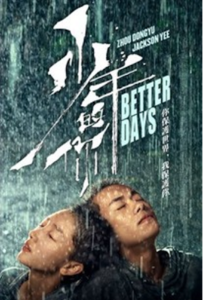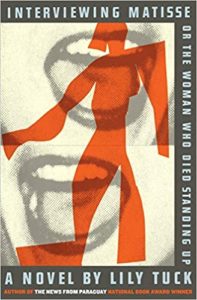
3 Surprising Facts About the Border Crisis
* US Customs and Border Protection agents apprehended 172,000 illegal aliens along the border in March, the largest surge ever. (National Border Patrol Council)
* Of those, 19,798 were unaccompanied minors. (Mostly teenagers.) That is the largest number ever recorded.
* The average cost to care for each child in a temporary facility is $290 per day. That rises to $775 for children in temporary facilities, according to HHS officials. The total cost per week now: $60 million.
3 Scary Facts About the US Economy
* In March, US debt passed the $28 trillion mark, an increase of $4.7 trillion over 13 months. (The Washington Post)
* The US economy (measured by GDP) is growing again since some of the shutdown measures were relaxed and/or removed. Still, GDP growth rates are about half what they were in the 1970s and 1980s.
* The global share of US-dollar-denominated exchange reserves (Treasury securities, US corporate bonds, US mortgage-backed securities, US Commercial Mortgage-Backed Securities, etc. held by foreign central banks) dropped to 59% in the fourth quarter, according to IMF’s COFER data released at the end of March. This matched the 25-year low of 1995.
6 Random but Revealing Facts
* 2020 marked the largest year-to-year increase in murders in the history of the country.
In Minneapolis alone, the murder rate doubled.
* The cannabis industry created 77,000 new jobs in 2020, and sales hit $18.3 billion.
* There are more trees on Earth than there are stars in the Milky Way. Every year, we lose 18 million acres of forest – an area the size of Panama. Since trees are a major carbon sink, deforestation also accounts for 15% of total annual greenhouse gas emissions.
* The US population grew by only 7.4% over the past decade, the smallest increase since the 1930s. The biggest cause of the population slowdown is the declining birthrate. (US Census Bureau)
* Nearly three-quarters of Americans agree that voters should show photo ID before being allowed to vote, according to an AP poll.
* “Beethoven became more original and brilliant as a composer in inverse proportion to his ability to hear his own – and others’ – music. But maybe it isn’t so surprising. As his hearing deteriorated, he was less influenced by the prevailing compositional fashions, and more by the musical structures forming inside his own head. His early work is pleasantly reminiscent of his early instructor, the hugely popular Josef Haydn. Beethoven’s later work became so original that he was, and is, regarded as the father of music’s romantic period. … Deafness freed Beethoven as a composer because he no longer had society’s soundtrack in his ears.” (Tune Out to Tune In)
5 Passing Thoughts I’m Chewing On
* Somebody who says lots of wise things recently wrote: “It’s almost always better to learn from peers who are 2 years ahead of you than mentors who are 20 years ahead of you. Life evolves and most insights get outdated.” I say: Advice from those that are 2 years ahead of you will be useful in moving your business forward in the moment, but if you want to be in business in 20 years, listen to the old guys too.
* When you build the business around your own talents, its growth potential is limited to who and what you are.
* Entertainment is the surest way to weaken the human mind and diminish the human soul.
* Politics is based on power. Capitalism is based on wealth. The way you rise in politics is by acquiring more power. The way you rise as an entrepreneur is to acquire more wealth. The difference between the two is the nature of the currency.
* Next to Shakespeare, Vladimir Nabokov may be the greatest writer of tragedy since the Greeks. He is that very rare writer who is a master of the five Aristotelian elements of tragedy (which are still applicable to modern tragedies of all kinds, including novels). Nabokov is a master when it comes to plot, which, Aristotle correctly pointed out, is the most important of the five elements. But he is also a master of characterization, of diction (verbal expression), of thought, of song, and of spectacle.
7 Statements I Want to Quote
* “Joy is not in things. It is in us.” – Charles Wagner
* “I don’t want to get to the end of my life and find that I lived just the length of it. I want to have lived the width of it as well.” – Diane Ackerman
* “He who has peace of mind disturbs neither himself nor another.” – Epicurus
* “The lowest form of popular culture – lack of information, misinformation, disinformation, and a contempt for the truth or the reality of most people’s lives – has overrun real journalism. Today, ordinary Americans are being stuffed with garbage.” – Carl Bernstein
* “At any given moment, public opinion is a chaos of superstition, misinformation, and prejudice.” – Gore Vidal
* “Coming back to where you started is not the same thing as never leaving.” – Sir Terry Pratchett
* “In order to enjoy life, we should not enjoy it too much.” – Vladimir Nabokov
9 Worthy Words I’m Going to Work Into Conversations
* exegesis: I heard or read this word at least 100 times during my graduate school years. I always thought it sounded impressive. I knew, from context, it was something that scholars did. But what exactly that was, I never took the time to find out. I came across it recently again and looked it up. It turns out it’s an academic synonym for “explanation.” Example: “If you think biblical exegesis is difficult, try explaining the US Tax Code.”
* heuristic: Another word I remember from graduate school but never used. It means “enabling one to learn something for himself.” It’s from the Greek word heuriskein for “find.” Example: “The pottery professor’s heuristic technique helped students discover their own sculpting style.”
* forfend: Forfend, a word that was first used in the 14th century, is still used, though nowadays it bears an antiquated patina. It means to forbid, to ward off or to prevent. Example: “All too often, the selfie is looked down upon with condescension, viewed as the narcissist’s calling card, treated with scorn and disdain. But why? Heaven forfend we show evidence of loving ourselves.” (Rachel Thompson)
* digerati: This word is de rigueur in conversation today. It refers to people that work with or teach information technology. Example: “Betty had complete faith that if she couldn’t fix her computer, the company’s digerati could.” Interesting… I could find no singular form of this word in any of the dictionaries I looked at. I suggest digeratum.
* holus-bolus: Here’s a fun word for you. Holus-bolus means all at once, as in “The guests arrived holus-bolus.” The derivation is uncertain, but it might have come from the Greek hólos bôlos (“clump of earth”).
* leitmotif: Another academic term. It means theme, as in “The futility of action was a leitmotif the author returned to over and over again.”
* inosculate: To join together in an intricate way. Example: “The toymakers shaped the product so that the pieces would inosculate while stored.”
* trenchant: Sharp; intense; forceful. Trenchant is often used to describe commentary or criticism. If you have a trenchant delivery, you’re known for your biting wit. You’ll be in good company with the likes of Oscar Wilde, Joan Rivers, and Jon Stewart. Example: “The professor’s trenchant critique discouraged her so much she considered dropping the class.”
* sprezzatura: Nonchalance; being (or feigning being) in a calm or relaxed state; studied carelessness, especially in the arts. Example: “At first glance, the mural seems unfinished, but it’s actually a lovely example of sprezzatura.”





